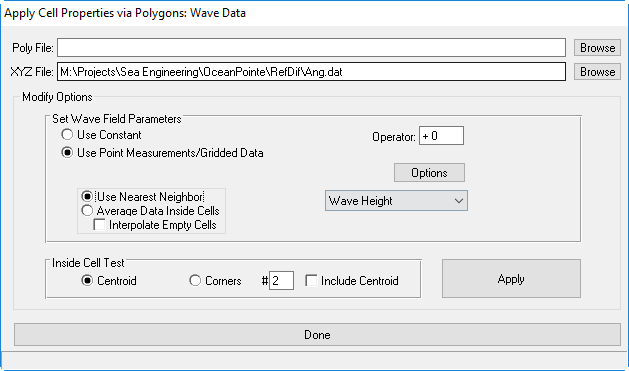...
This is an option for EE7 and earlier and it is not advised be used due to the longer time required to prepare the input data. For ISWAVE=1 and ISWAVE=2 the external model results may be imported into EFDC_Explorer which will generate the required wave linkage file, depending on the ISWAVE option. Figure 2 shows the main import/field interpolation form for the wave parameters for ISWAVE=2. The user must match the input data file (which should be in XYZ format tab, space or comma delimited) to the parameter specified on drop down list Wave Field Parameters (options shown in adjacent inset). The user can either have wave height (2*wave amplitude) or wave energy. EE will compute the one from the other. The user has the option of using a polygon to select which EFDC cells will be used for the assignment. If a Poly file is not selected, then the assignment operation will be for the entire model domain. EE interpolates and converts the wave model results into the formats needed for EFDC. The interpolation process has two options, nearest neighbor interpolation or cell averaging. Cell averaging should be used when the imported data is denser than the EFDC model grid (this will usually be the case). The nearest neighbor interpolation scheme should be used if the imported data is sparser than the EFDC model grid.
| Anchor | ||||
|---|---|---|---|---|
|
Figure 2 Wave generated turbulence, import data form.
...

